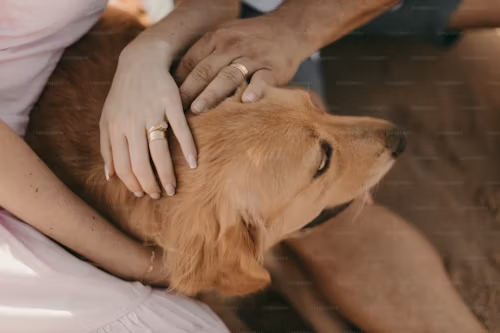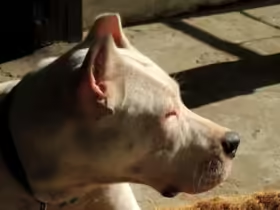Pets communicate with us constantly, but unlike humans, they don’t use words. Instead, dogs and cats rely on body language, vocalizations, and subtle behaviors to express their feelings, needs, and intentions. Understanding your pet’s body language can strengthen your bond, prevent misunderstandings, and help you respond appropriately to their emotional state. This guide will help you decode what your dog or cat is trying to tell you.
1. The Basics of Pet Body Language
Body language in pets involves various signals, including posture, facial expressions, tail movements, and vocalizations. To understand these signals, it’s important to consider the entire body rather than focusing on a single aspect, as pets often use a combination of signals to convey their emotions.
Key Elements of Body Language:
- Posture: The overall stance of your pet’s body.
- Facial Expressions: Eye shape, ear position, and mouth movements.
- Tail Movement: The position and movement of the tail can convey a range of emotions.
- Vocalizations: Barking, meowing, growling, purring, and hissing.
2. Understanding Dog Body Language
Dogs are known for their expressive nature, and they use their bodies extensively to communicate with humans and other animals. Here’s how to interpret common body language signals in dogs:
A. Relaxed and Happy Dog
- Posture: Loose, relaxed body with a wagging tail.
- Ears: Neutral or slightly forward.
- Eyes: Soft, relaxed gaze, often with “soft eyes” that may blink.
- Mouth: Slightly open, relaxed, possibly with a gentle pant.
- Tail: Wagging in a loose, comfortable manner, not stiff.
What It Means: Your dog feels safe, comfortable, and happy. This is a great time for bonding, playing, or training.
B. Alert and Curious Dog
- Posture: Standing tall with weight distributed evenly on all four paws.
- Ears: Perked up, facing forward.
- Eyes: Focused, attentive gaze.
- Mouth: Closed or slightly open.
- Tail: Horizontal or slightly raised, may be still or moving slowly.
What It Means: Your dog is interested in something in the environment. It’s a neutral state but can quickly shift depending on what happens next.
C. Anxious or Fearful Dog
- Posture: Crouched, low to the ground, or trying to appear smaller.
- Ears: Pulled back against the head.
- Eyes: Wide, with whites of the eyes visible (“whale eye”).
- Mouth: Tightly closed or pulled back lips, possibly panting.
- Tail: Tucked between the legs or held low.
What It Means: Your dog is feeling scared or threatened. It’s important to remove them from the source of fear and provide comfort without reinforcing the fear.
D. Aggressive or Defensive Dog
- Posture: Stiff, upright, weight shifted forward.
- Ears: Forward and alert, or flattened against the head.
- Eyes: Intense, direct stare.
- Mouth: Lips pulled back, showing teeth, growling or barking.
- Tail: High and stiff, possibly bristling.
What It Means: Your dog feels threatened and is prepared to defend itself. This is a warning to back off and avoid further provoking the dog.
E. Submissive Dog
- Posture: Rolling onto their back, exposing the belly, or crouching low.
- Ears: Pulled back.
- Eyes: Avoiding direct eye contact, soft gaze.
- Mouth: Licking lips, possibly whining.
- Tail: Tucked or wagging low and quickly.
What It Means: Your dog is showing submission, often to diffuse tension or show respect to a more dominant individual.
3. Understanding Cat Body Language
Cats are often seen as more aloof or mysterious than dogs, but they also communicate extensively through body language. Knowing what to look for can help you better understand your feline friend.
A. Relaxed and Content Cat
- Posture: Lying down, often with paws tucked under or lying on the side.
- Ears: Facing forward or relaxed to the side.
- Eyes: Soft, slow blinks, or half-closed.
- Mouth: Closed, possibly purring.
- Tail: Calmly curled around the body or loosely lying behind.
What It Means: Your cat feels safe, content, and relaxed. Slow blinking back at your cat is a great way to show affection.
B. Alert and Curious Cat
- Posture: Sitting upright or standing with weight evenly distributed.
- Ears: Perked up, facing the direction of interest.
- Eyes: Wide open, focused gaze.
- Mouth: Closed, silent or soft meowing.
- Tail: Up or twitching at the tip.
What It Means: Your cat is interested in something and is assessing the environment.
C. Anxious or Stressed Cat
- Posture: Crouched low, body tense.
- Ears: Flattened or turned back.
- Eyes: Wide open, dilated pupils.
- Mouth: Closed, possibly hissing or growling.
- Tail: Tucked close to the body or flicking quickly.
What It Means: Your cat is feeling uneasy, threatened, or scared. Give them space and avoid sudden movements.
D. Aggressive or Defensive Cat
- Posture: Arched back, fur standing up (piloerection), sideways stance.
- Ears: Pinned back tightly against the head.
- Eyes: Direct stare, dilated pupils.
- Mouth: Open with hissing, growling, or spitting.
- Tail: Puffed up, bristling, and lashing or held low.
What It Means: Your cat feels highly threatened and is prepared to fight if necessary. Avoid approaching and try to diffuse the situation calmly.
E. Playful Cat
- Posture: Bouncing, pouncing stance, or lying on the side ready to swat.
- Ears: Forward or slightly turned to the side.
- Eyes: Bright, focused gaze, pupils may be slightly dilated.
- Mouth: Closed or soft meows.
- Tail: High with a curve, quick flicking.
What It Means: Your cat is in a playful mood and ready for interaction, such as chasing toys or engaging in gentle roughhousing.
4. Key Differences Between Dog and Cat Body Language
While both dogs and cats use body language to communicate, they often express similar emotions in different ways. Here are a few key distinctions:
- Tail Movements: A wagging tail in dogs usually indicates happiness, but in cats, it often signals irritation or anxiety.
- Eye Contact: Dogs may seek eye contact as a bonding gesture, while direct eye contact with cats can be seen as a challenge or threat.
- Ears: Forward ears in dogs indicate attentiveness, while in cats, forward ears usually signal alertness but can also indicate readiness to pounce.
- Body Posture: A belly-up position in dogs often means submission, but in cats, it’s more complex, indicating trust but also readiness to defend if touched.
5. How to Respond to Your Pet’s Body Language
Understanding your pet’s signals is only the first step. Responding appropriately can help reinforce positive behavior, provide comfort, or prevent conflicts.
- Positive Reinforcement: Reward calm, relaxed, and happy body language with treats, praise, or petting.
- Avoid Punishment: Never punish a fearful or aggressive pet, as this can worsen their anxiety and damage your relationship.
- Provide Space: If your pet is showing signs of stress, fear, or aggression, give them space and time to calm down.
- Engage Playfully: Recognize when your pet wants to play and engage with toys, interactive games, or gentle handling.
- Consult a Professional: If your pet displays frequent aggression, fear, or unusual behavior, consult a veterinarian or animal behaviorist for guidance.
Conclusion
Understanding your pet’s body language is a vital skill that enhances your relationship and helps ensure your pet’s well-being. By paying attention to their signals and responding appropriately, you can communicate effectively with your furry friends, making their lives happier and more comfortable. Whether it’s recognizing a happy tail wag from your dog or a contented purr from your cat, these insights will help you better connect with your pets on a deeper level.











Leave a Reply